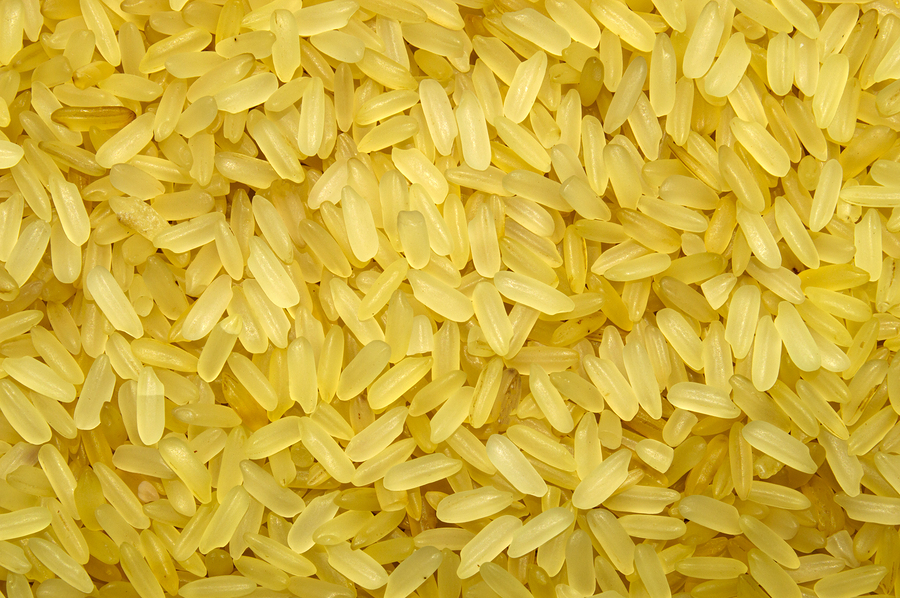As the GMO industry seeks to expand its grip over the global food system, it has targeted developing countries and the problems they face in in crop production. Drought and pest damage are two issues that Monsanto and its cohorts see as opportunities for unleashing their patented, genetically modified (GM) crops.
Nutrient deficiency is another problem in developing countries that GMO corporations insist should be addressed with their products. One high-profile example is vitamin A deficiency, which especially affects the Global South, increasing risks of infection, disease and other ailments such as blindness.
Golden Rice was supposed to be the GMO industry’s great solution.
In 2000, Time magazine trumpeted Golden Rice—a genetically modified crop commercially licensed by Syngenta—as a way to save the lives of millions of people in the Third World. The Bill and Melinda Gates Foundation, which strongly advocates for GM crops everywhere, has long supported Golden Rice by funding the International Rice Research Institute.
However, after 24 years of promises and propaganda campaigns against GMO critics, Golden Rice is turning out to be a dud. It is nowhere close to field introduction and is likely to fall short of its purported health benefits, according to a new study from Washington University in St. Louis.
Lead author Glenn Stone, a recognized expert in global agricultural trends and humanitarian issues, used to think we should give Golden Rice a chance. But a frank analysis of the situation now leads him to a different conclusion.
“Golden Rice was a promising idea backed by good intentions,” Stone said. “In contrast to anti-GMO activists, I argued that it deserved a chance to succeed. But if we are actually interested in the welfare of poor children — instead of just fighting over GMOs — then we have to make unbiased assessments of possible solutions. The simple fact is that after 24 years of research and breeding, Golden Rice is still years away from being ready for release.”
GMO researchers seek to increase the amount of beta carotene by inserting genes into existing rice strains, which they say will increase available vitamin A in the edible grain.
But they still have not been able to produce strains that yield as well as non-GM strains. Stone points out that Golden Rice “has not been successful in test plots of the rice breeding institutes in the Philippines, where the leading research is being done.”
Little is known about how well the beta carotene will hold up in storage between harvests, or when cooked using traditional methods in remote rural areas. It is not even known whether the Golden Rice beta carotene can be converted to vitamin A in badly undernourished bodies.
Despite these realities, GMO proponents push hard for Golden Rice, and have suggested that critics are prolonging the misery of poor people with vitamin A deficiencies. Monsanto and their propaganda outlets like the GMO Literacy Project say that activists are responsible for the inability of Golden Rice to become a viable solution.
This too is debunked by the study.
“Golden Rice is still not ready for the market, but we find little support for the common claim that environmental activists are responsible for stalling its introduction. GMO opponents have not been the problem,” said Stone.
We also find that solutions are being found outside of the GMO industry.
“Meanwhile, as the development of Golden Rice creeps along, the Philippines has managed to slash the incidence of Vitamin A deficiency by non-GMO methods, Stone said.”
Campaigns initiated in 2000 to supplement foods with vitamin A, including bits of carrot, and to fortify foods have resulted in significant declines in vitamin A deficiency. Plant breeders have also produced non-GM corn varieties high in beta carotene.
Obviously, there are other ways to deal with nutrient deficiency. Golden Rice is but a Trojan horse for GMO corporations to prey on poorer countries by securing a dependency on their patented products.
In fact, genetic modification is not necessary to rapidly produce improved varieties. ‘Marker-assisted selection‘ harnesses genetics to greatly accelerate classical breeding, by precisely picking desired traits without directly altering the genome or inserting foreign genes.
Once again we see the myths perpetrated by the GMO industry falling apart as time goes on. They said their crops would feed people with increased yields and help the environment by reducing chemical use, but neither has turned out to be true.
In fact, most increased yields have come from non-GMO varieties. Both herbicide and pesticide use have increased with GMO use, including neonicotinoids which decimate bees, butterflies and birds. The widespread use of herbicide-resistant GM crops has driven a dramatic increase in toxic herbicide use, as well as the emergence of superweeds.
This focus on killing life instead of promoting life is central to the industrial agriculture regime that now controls our food supply, and it goes hand in hand with the GMO industry. Their ideal crop is a monoculture field in a biological desert, fed by chemical fertilizers. No other plants exist, and the soil is devoid of life.
This is antithetical to thousands of years of sustainable agriculture practices that focus on promoting diversity and enriching the soil, or working with nature to harness her abilities. Crop rotation, diverse plantings within a field, regular additions of organic matter and attracting beneficial insects and wildlife are proven by the test of time.
We know more than ever how to do these things; they are embodied in principles such as Integrated Pest Management and Farmscaping.
Let the failure of Golden Rice be the example of why we don’t need genetically modified crops and the shackles of corporate patents to address the problems of food production.












